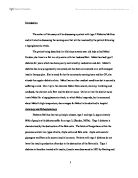Urinalysis is executed as part of a routine physical evaluation. It is an inexpensive and easy method to indicate whether further follow up tests may be needed. These tests may include blood tests for diabetes via secretion of glucose in the urine or bloo
Urinalysis
Urinalysis with a reagent strip is a beneficial technique for indicating whether further tests are needed for bladder, kidney or urinary tract infection, pregnancy, dehydration or diabetes only if carried out in an aseptic and patient centred manner. Urinalysis can be broken down into four stages: communication, preparation, testing, and recording results (Kozier, 1998).
Urinalysis is executed as part of a routine physical evaluation. It is an inexpensive and easy method to indicate whether further follow up tests may be needed. These tests may include blood tests for diabetes via secretion of glucose in the urine or blood tests for white blood cell deficiencies via secretion of white blood cells in the urine (Rosdahl, 2003). Other abnormalities that the nurse could be investigating via urinalysis are an indication of the presence of pathogens in the kidney, bladder or urinary tract (Rosdahl, 2003). In the case of an infection, further tests and the use of urinalysis may determine the appropriateness of antibiotic prescription (Simerville, 2005). An analysis of the solute composition of urine may aid in the diagnosis of dehydration, which may inform the prescription of oral or intravenous dehydration solution (Higgins, 2007).
Ransmayr (2008) illustrates that an important part of the process of urinalysis is communication with the patient. It is important to explain to the patient why she is being asked for a sample, this facilitates patient consent and provides recognition of the patient as a person rather than a clinical object. If the patient is deaf or does not speak English it would be culturally sensitive for the nurse to use an interpreter of the same gender where possible. The nurse should then make the patient aware of the process behind urinalysis in order to foster cooperation (Ransmayr, 2008). This also maintains patient self esteem; self esteem comes from a feeling of control over the outcome of personal circumstances (Kenworthy, 2002). It is worth noting that communication style will need to be adapted according to the individual (Dougherty, 2008). From my own experience, the nurse should be especially aware that in the case of dementia patients, the nurse may need to allocate extra time to the communication stage of the process and may need to repeat the reason for the sample several times at regular intervals. The nurse will also have to use short sentences to overcome the confusion that accompanies dementia (Brooker, 2007). This further emphasises that forgetfulness is no reason to ignore dignity (Ransmayr (2008). Dougherty (2008) further claims that without understanding the nurse has failed to attain consent (Dougherty, 2008).







